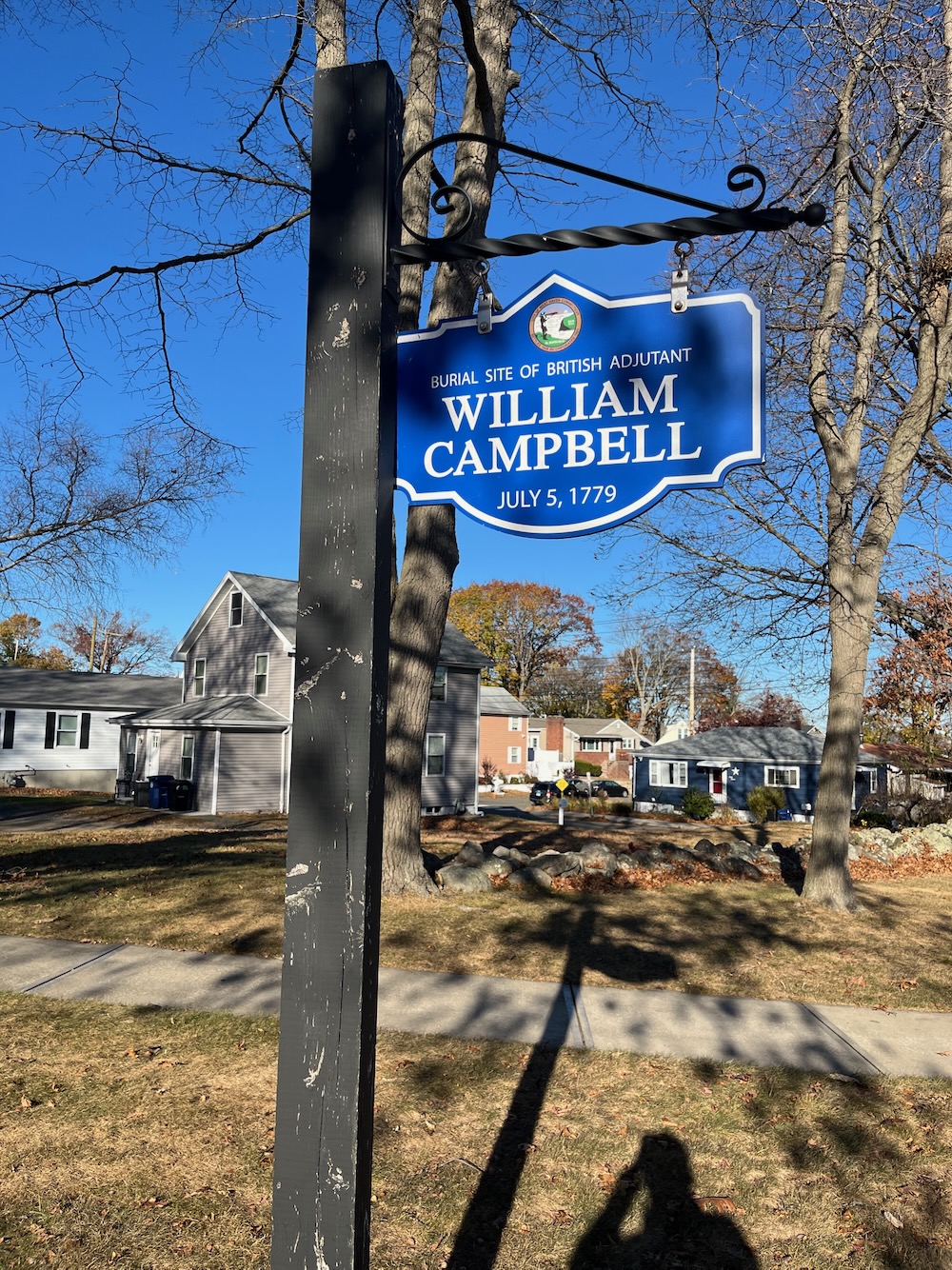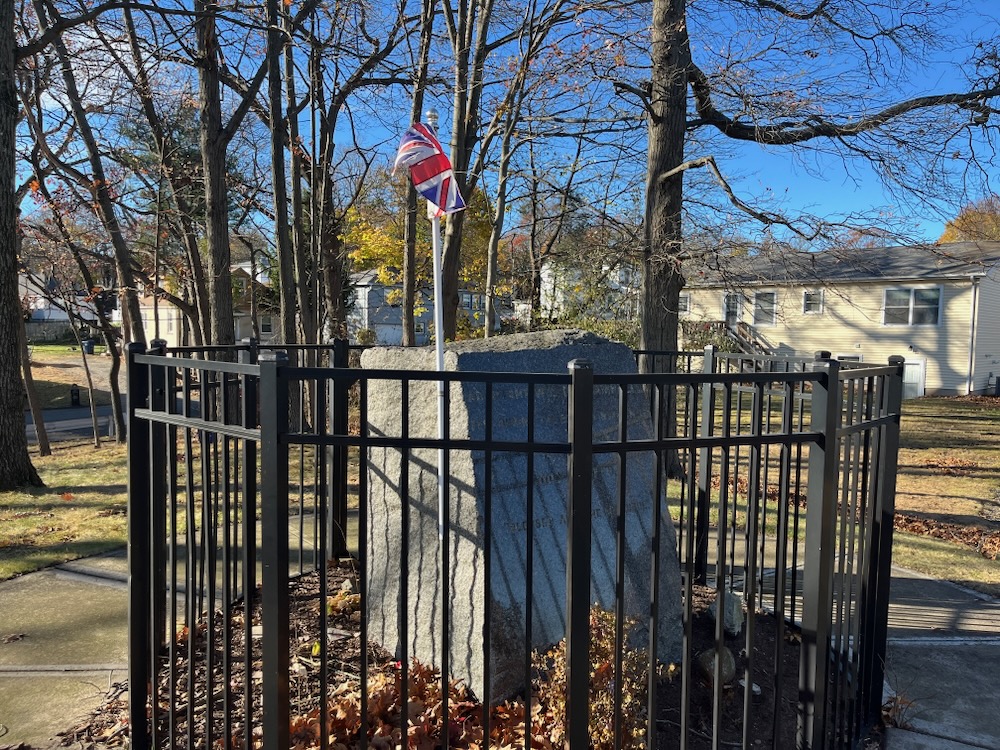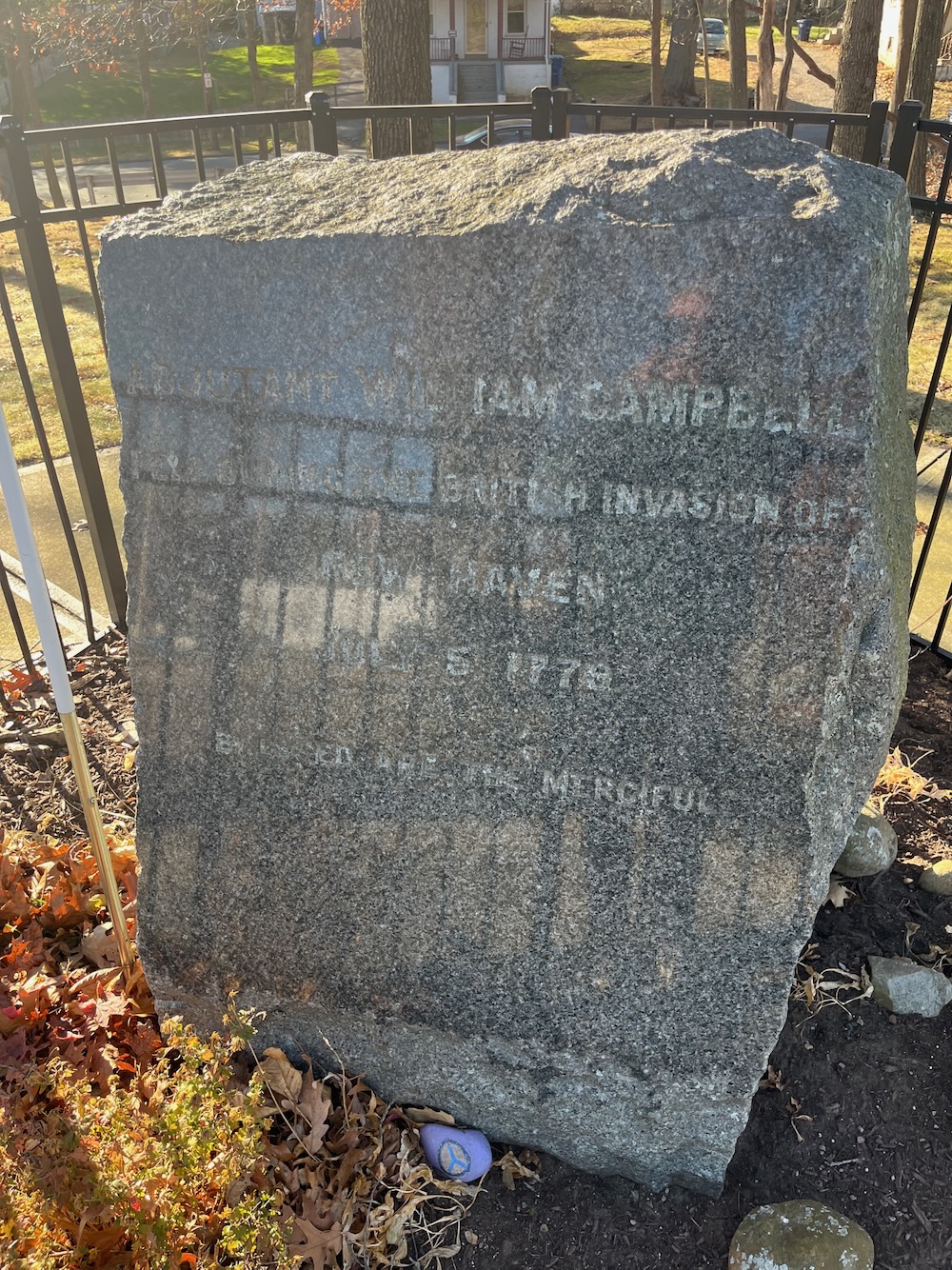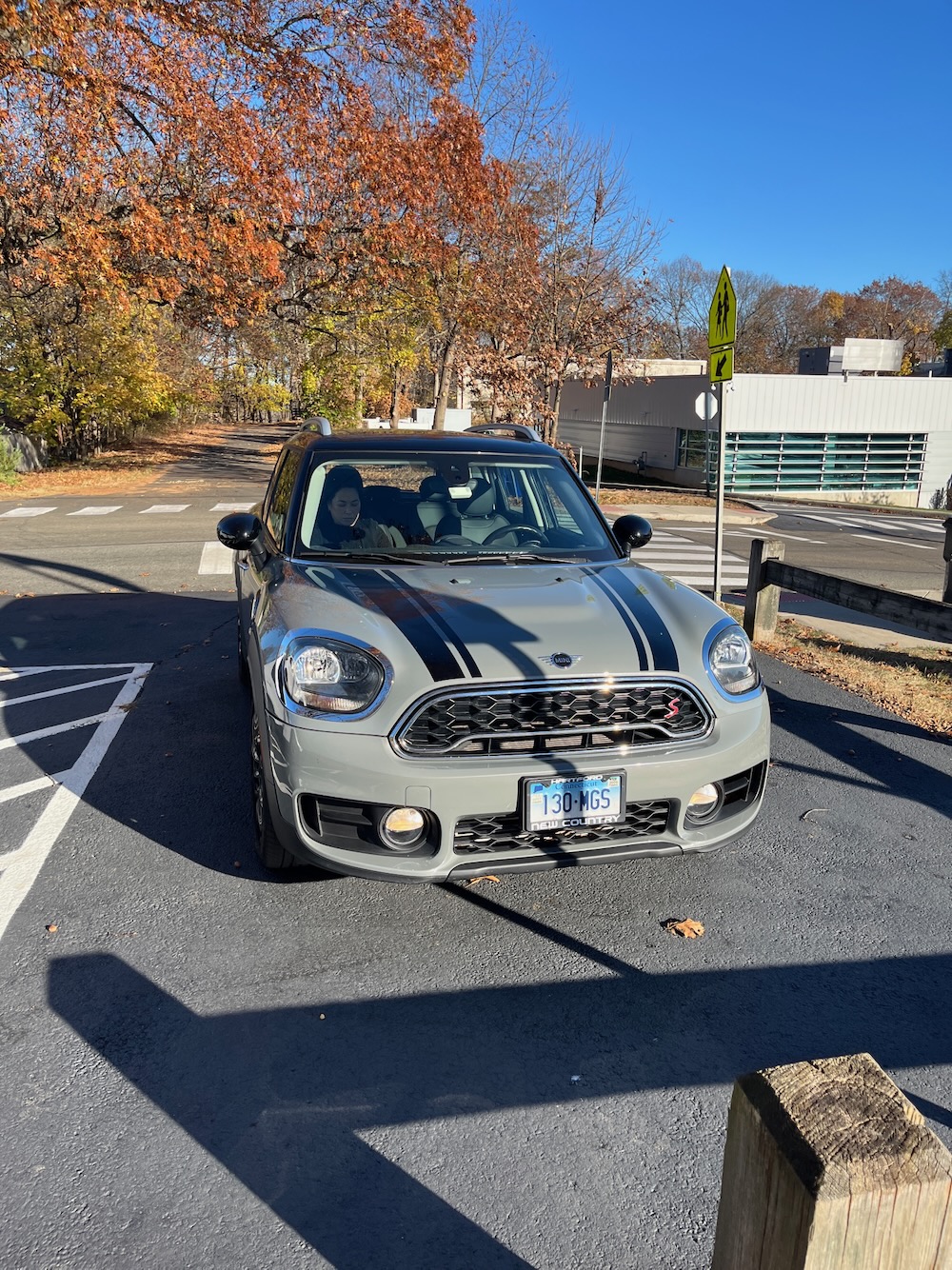Bloody Hell
Adjutant William Campbell Memorial, West Haven
November 2024
I’ve had this memorial on my radar for a while. I always had it in my head as the only memorial in the US honoring an enemy combatant. Which, if true, is both weird and fascinating. But now that I’ve been to the Adjutant William Campbell Memorial in West Haven, the superlative here gets a bit more nuanced.
As they almost always do.

Or maybe it’s just the way this is written:
To this day, the adjutant is the only known enemy combatant recognized by the very American town he invaded with both a monument and principal avenue named in his honor.
So Wait… actually, what is an adjutant? It’s a military officer who acts as an administrative assistant to a senior officer. Hm. Not the most glamorous position on the battlefield. Anyway, back to the quote above…
Is it saying that this block of granite behind a comically serious fence in a tiny pocket park is unique not just because it’s honoring an enemy, but honoring an enemy who attacked what is now West Haven? Or is it both of those qualifiers and having a nearby principal avenue named in his honor that makes it unique in the country?
I don’t know, but I do know this thing is worthy of its place on this website.

Adjutant William Campbell
Fell During the British Invasion Of
New Haven
July 5, 1779
Blessed Are The Merciful
On the sultry morning of July 5, 1779, the British army invaded New Haven Harbor in an amphibious assault from a fleet of 48 ships, with 1,500 troops coming ashore at West Haven’s “Old Field” under Maj. Gen. George Garth and 1,100 troops landing in East Haven under Maj. Gen. William Tryon.
Campbell, a Scotsman serving in the British army, was doing his thing when he came upon a scene where outspoken Revolutionary Reverend Noah Williston of West Haven’s First Congregational Church was about to be killed.
Williston had broken his leg and a gang of British soldiers and Hessian Jager mercenaries had their bayonets at his throat. Campbell stopped them and then ordered the soldiers to help the minster back to the parsonage and had the regimental surgeon set his leg. Campbell allegedly said, “We make war on soldiers, not civilians.”
Apocryphal history is fun.
Campbell then ordered the troops to carry Williston to the parsonage and summoned the regimental surgeon to set his leg. Without social media or group texts, the whole town became enamored of Campbell immediately.

Except that one farmer who didn’t get the memo and shot Campbell near where the monument now stands. The mortally wounded adjutant, who was married with a young family, was carried by sympathetic townspeople (who did get the memo) to the farmhouse of a nearby family. As he lay dying, he allegedly won the hearts of the family with his patience and gentleness, just as he had the appreciation of townsfolk for his earlier act of mercy.
Apocryphal history is ridiculous.
According to historian Peter J. Malia, who wrote a lot of the “allegedlies” on this page, Campbell’s body was wrapped in a blanket, placed on a sheep rack, and transported to a hastily dug grave on the north side of the Post Road in a hollow by the edge of the woods. An adjacent strip of land was donated by resident John Prudden.
The granite monument, which was erected by the New Haven Colony Historical Society on July 4, 1891, marks Campbell’s approximate final resting place.
Rev. Williston lived until 1811 and he allegedly celebrated the anniversary of Campbell’s extraordinary act of compassion by delivering a sermon, Matthew 5:7: “Blessed Are the Merciful,” every year. Hence, the inscription on the stone marker.
There are lots of articles and stories about this whole incident, and as I wrap up this page which only adds to the legend, I found one from 2018 that simply states what I originally thought: “To this day, Campbell Avenue and the Campbell Monument are thought to be the only such testimonials honoring an enemy combatant in the United States.”
And until someone shows me otherwise, I chose to believe it.
All of the historical (and apocryphal) information on this page has been cobbled together from various articles that all point back to the work of Peter J. Malia and his ultimately his book “Visible Saints,” West Haven, Connecticut, 1648-1798.” By the way, West Haven is Connecticut’s youngest town, not gaining its independence from New Haven until the 20th century.

My wife in her British car at the pocket park
CTMQ’s Statuary, Memorials, Monuments, & Plaques
CTMQ’s US & World Firsts & Onlies

Leave a Reply